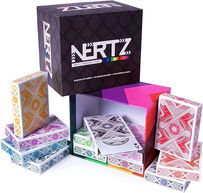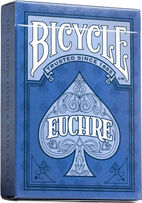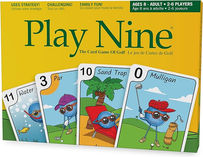This post contains affiliate links. For more information, see our disclosures here.
Official Whist Rules
There are two main variations of Whist: Solo Whist and Auction Whist. Here's a breakdown of the rules for each:
Objective
Win more tricks than the pre-determined number (typically 3 or 4) by strategically playing your cards.
Setup
1. Shuffle the Deck: Mix the cards thoroughly.
2. Turn Up Trump Card: Deal the top card of the deck face up. This card and its suit become the trump suit for the round.
3. Deal Your Hand: Deal yourself 13 cards face down.
Gameplay
Solo Whist (1 Player):
Objective: Win more tricks than the pre-determined number (typically 3 or 4) by strategically playing your cards.
Components:
Standard 52-card deck
Scoring system (pen and paper or dedicated whist score sheet)
Setup:
Shuffle the Deck: Mix the cards thoroughly.
Turn Up Trump Card: Deal the top card of the deck face up. This card and its suit become the trump suit for the round.
Deal Your Hand: Deal yourself 13 cards face down.
Gameplay:
Solo Whist follows a trick-taking structure:
1. Lead Suit: The player who didn't deal starts the first trick by playing any card from their hand. This establishes the "lead suit" for the trick.
2. Follow Suit: Players take turns clockwise, and each must try to play a card that follows the suit led (if possible).
3. Winning the Trick: If you can't follow the lead suit, you can play any card from your hand. The highest card of the lead suit, or if none were played, the highest trump card played wins the trick.
4. Taking Tricks: The winner of each trick collects the played cards and leads the next trick.
5. Scoring: Keep track of how many tricks you win throughout the round.
6. Round End: The round ends after all 13 tricks have been played.
Winning:
Winning Score: If you win more tricks than the pre-determined number (e.g., 4 out of 13 tricks), you win the round.
Losing Score: If you win fewer tricks than the pre-determined number, you lose the round.
Playing Solo Whist:
Since you're playing against a pre-determined number of tricks, you need to strategically play your cards to maximize your chances of winning tricks.
Discard low cards of non-trump suits early to hold onto higher cards and potential trumps for later tricks.
Auction Whist (Partnership Game):
Objective: Win more tricks (as a team) than the opposing team by bidding on the number of tricks you think you can win and strategically playing your cards.
Components:
Standard 52-card deck
Bidding system (can be simple or complex depending on the players' experience)
Scoring system (pen and paper or dedicated whist score sheet)
Setup:
Shuffle the Deck: Mix the cards thoroughly.
Deal and Partner Up: Deal 13 cards face down to each player. Players sitting opposite each other become partners.
Turn Up Trump Card: Deal the top card of the deck face up. This card and its suit become the trump suit for the round.
Bidding:
Players take turns bidding on the number of tricks they believe their team can win in the round. Bidding starts with the player to the dealer's left and continues clockwise.
Bids can be increased by other players, with the highest bidder winning the bid.
The winning bid becomes the "contract" for the round, indicating the number of tricks the bidding team must win to score points.
Gameplay:
Auction Whist follows the same trick-taking structure as Solo Whist, with players trying to follow suit and winning tricks with the highest cards.
Scoring:
Winning Team: If the bidding team wins exactly the number of tricks they bid on (their contract), they score points based on the agreed-upon scoring system (e.g., 1 point per trick above their bid).
Losing Team: If the bidding team wins less than their bid, they lose points.
Overtricks: If the bidding team wins more tricks than their bid, they score bonus points for each "overtrick."
Playing Auction Whist:
Bidding Strategy: Bidding involves analyzing your hand, your partner's hand (through subtle signals or pre-arranged agreements), and the trump suit to estimate the number of tricks you can realistically win.
Communication: Watch your partner's discards for clues about their hand strength and potential trump holdings.
Teamwork: Work together with your partner to win tricks and fulfill your contract.
Variations
Whist with Partners: This variation is similar to Auction Whist but without the bidding element. Partners simply work together to win more tricks than the opposing team.
Additional Rules
Leading: The player who wins the previous trick leads the next one.
Trump Suit: If a trump suit is in play, any card of the trump suit beats all cards of any other suit.
Reneging: Failure to follow suit when able is a renege. Penalties for reneging vary by house rules.
Whist is a classic card game that offers a balance of luck, strategy, and partnership play. Whether you prefer the challenge of Solo Whist or the excitement of bidding and teamwork in Auction Whist, this trick-taking card game is a lot of fun!
















